Introduction
The Sony Xperia M2 Aqua will give you all the water resistance you need. That's more than enough for marketing to work with, but they'll need to work hard nonetheless. You see, it's otherwise a well familiar package. So, Sony will take you to the water but will they make you drink?Although we can safely do without expectation management, the Aqua shouldn't be construed as an upgrade. It's more of a special waterproofed edition of the regular M2, which took care of the upgrades just fine, a few months back. The Aqua will serve a small niche but, luckily, not one that's packed with competitors. The Xperia M2 Aqua has the highest water-resistance rating for a mass-market smartphone. That's something very few, besides Sonim, can match. Yes, it's that serious.
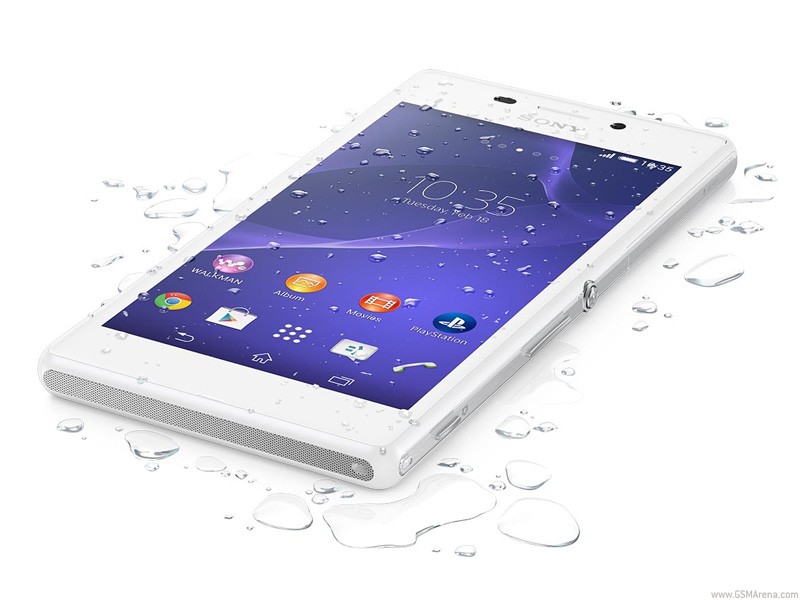
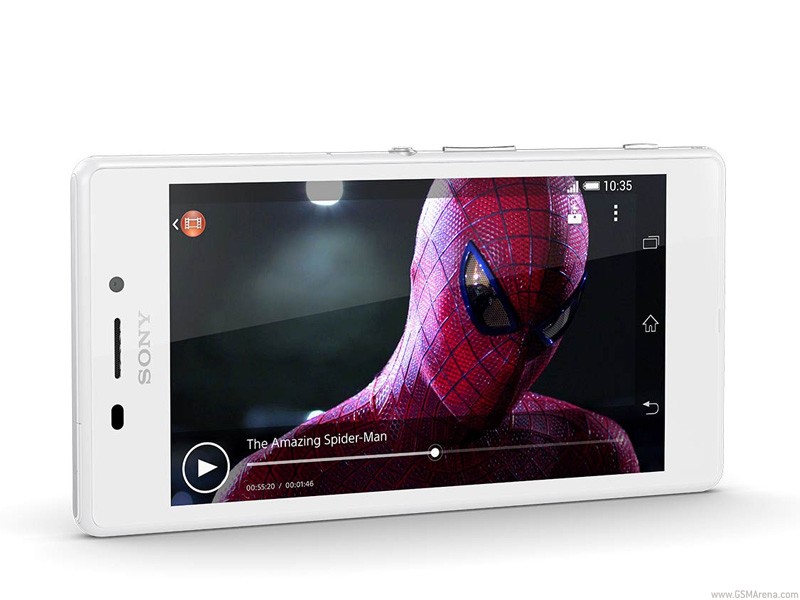
And for the users who don't care about water resistance, the Xperia M2 will gladly provide the rest. We're talking the same camera, chipset, screen and battery - in a package that's virtually the same size. With the regular M2 eligible for a KitKat upgrade, and already getting it in certain places, the water resistance is the only notable change by way of specs. Here they go anyway.
Key features
- 4.8" IPS LCD, 540 x 960px, 229ppi, Gorilla Glass 3, ambient light sensor
- LTE connectivity
- Android 4.4.2 KitKat with Xperia UI on top
- IP68 certified - dust and water proof up to 1.5 meter and 30 minutes
- Qualcomm Snapdragon 400 chipset with quad-core 1.2GHz Cortex-A7 processor, Adreno 305 GPU and 1GB of RAM
- 8MP camera, single LED flash, 1080p video recording, dedicated hardware shutter key
- VGA front-facing camera with video recording
- 8GB of built-in storage, expandable via the microSD card slot
- Active noise cancellation with a secondary microphone
- 2,300mAh battery; STAMINA Power Saving Mode
Main disadvantages
- Low screen resolution for the size
- Non user-replaceable battery
- 3.5mm headphone jack has a flap (unlike most other waterproof phones)
Snapdragon 400 is a popular choice with this generation of Sony midrangers and that makes sense - it's what the competition's been doing for a while now. A Snapdragon 400 and a qHD screen are last season's minis' specs - to be on the safe side, Sony should price the Aqua comfortably below the new crop, which boast HD screens.
In fact, some rivals manage a 720p screen with a Snapdragon 400 chipset. What if Sony wasn't busy plugging the Xperia M2's holes and went for a higher screen resolution? Maybe they thought they had enough supply of those in the T2 phablet, the C3 and the T3, the still relevant SP.
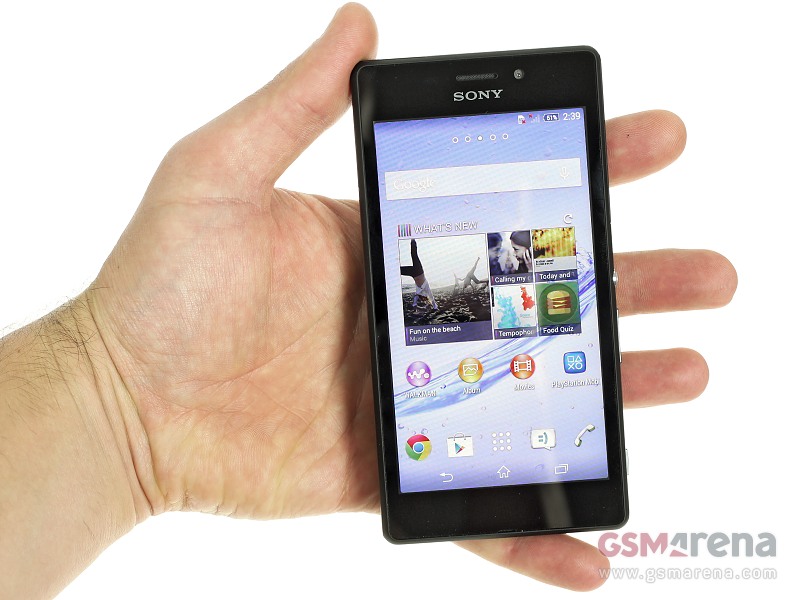
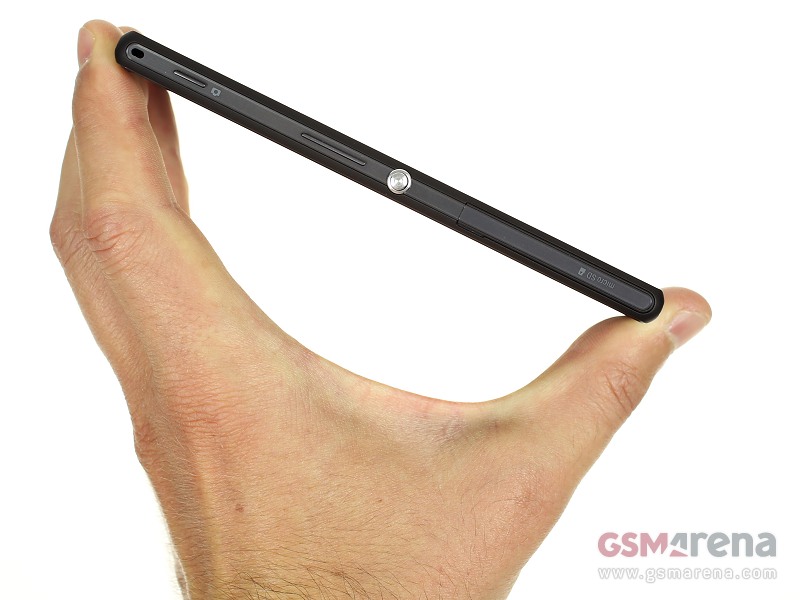
Sony Xperia M2 Aqua at HQ
Design and handling
The design of the Sony Xperia M2 Aqua is untouched. The Omnibalance aesthetic has carried the company through several generations - still perfectly relevant in a midrange context. Flat front and rear with a metal frame to hold the pieces together. The sides have matte finish for proper grip. The corners are subtly rounded at the very point, the sole exception in an otherwise very sharp, rectangular outline.
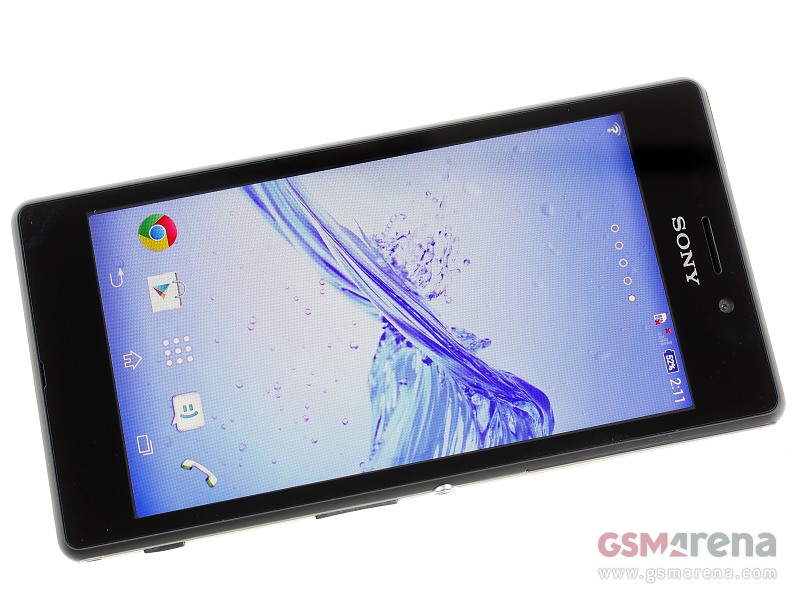
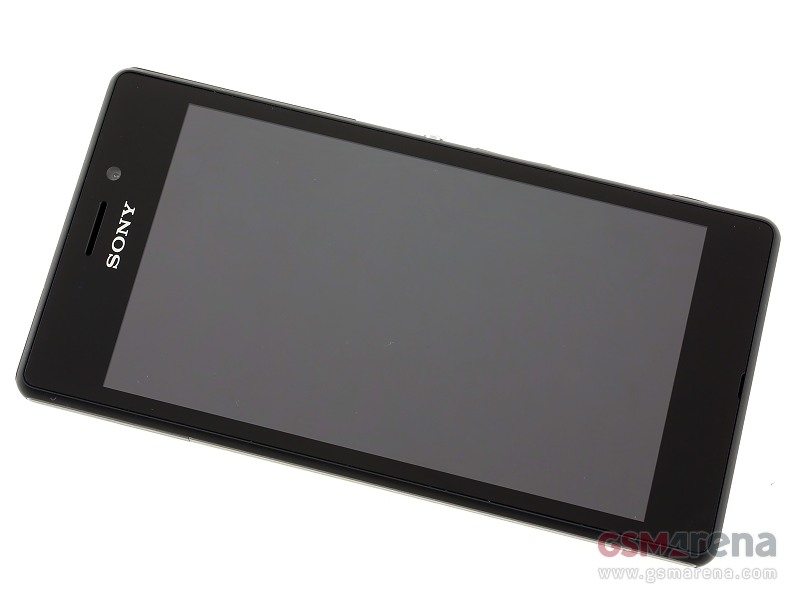
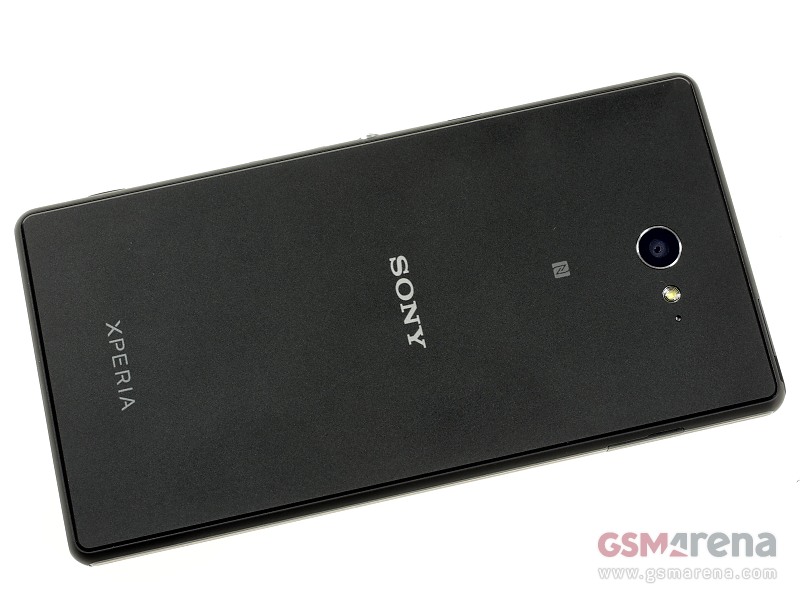
Sony Xperia M2 Aqua
The Sony Xperia M2 Aqua isn't the most compact of devices, a little bigger than even some 5" phones, but still usable single-handedly. The thickness isn't overwhelming but the weight is something you'll notice.
Controls
The Sony Xperia M2 has pretty much the same controls as most of the Xperia smartphones released over the past year or so and the same layout as the Xperia M2. Above the screen we find the VGA camera, a couple of sensors, the earpiece and a small status LED.Gone is the LED strip at the bottom that matched the dominant color on the current screen. There's just the tiny LED next to the earpiece. It won't be missed much anyway.
The right side has a half-press physical shutter button, a volume rocker and an aluminum power button, that's become a Sony staple.
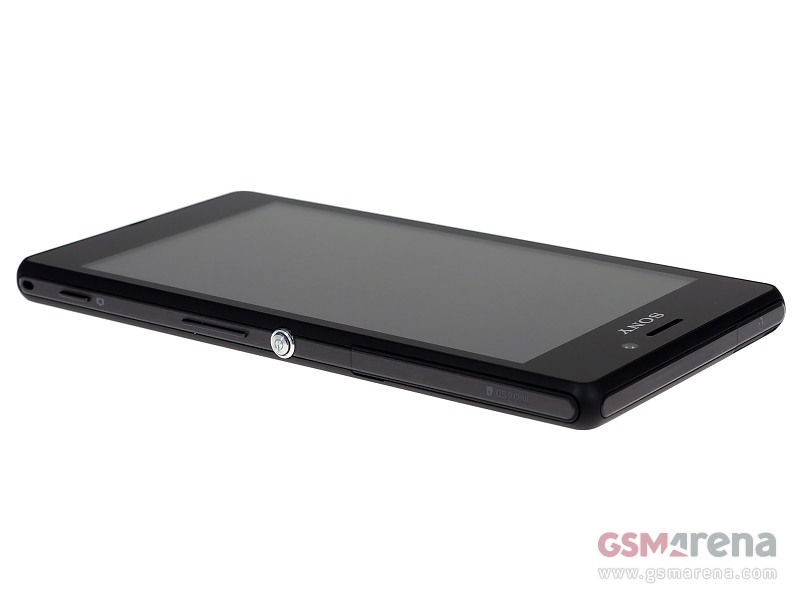
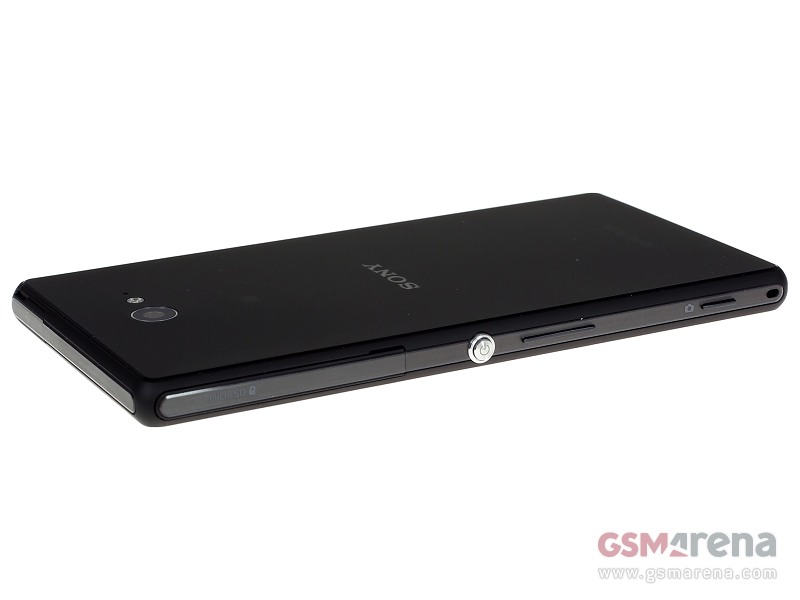

The right side of the phone
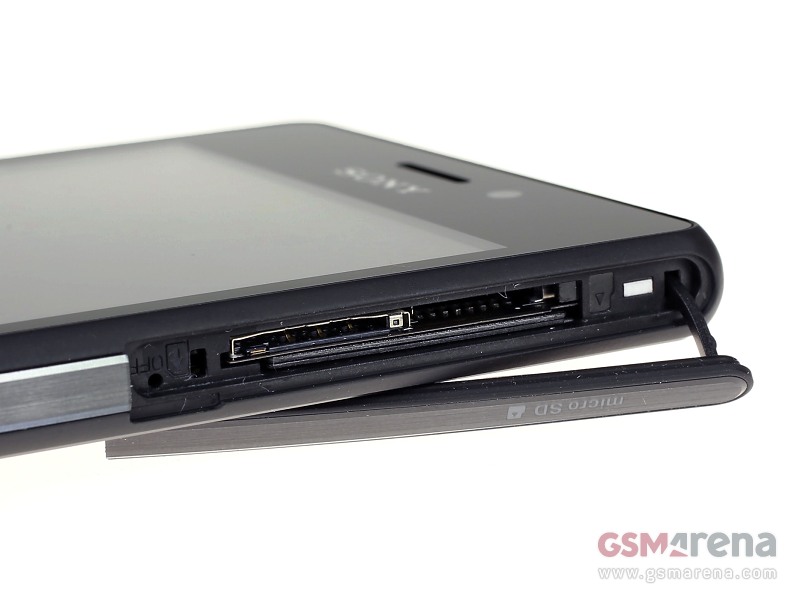
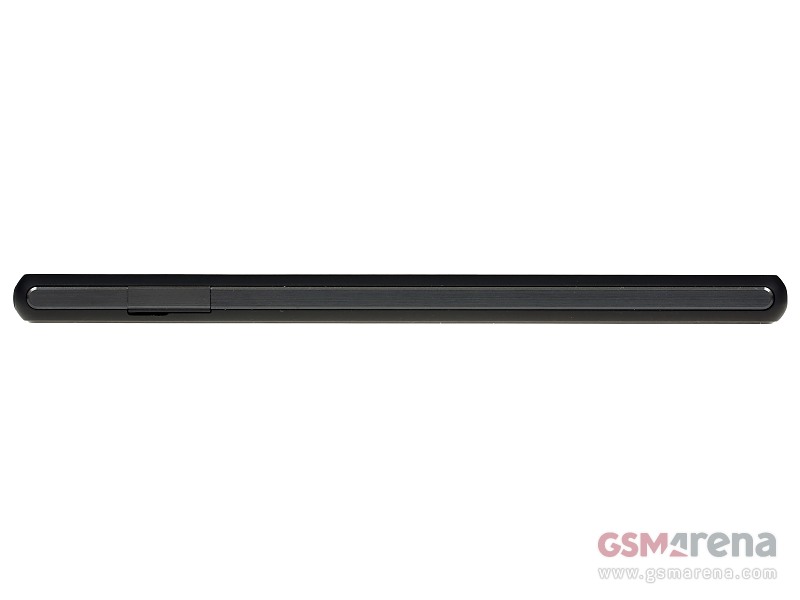
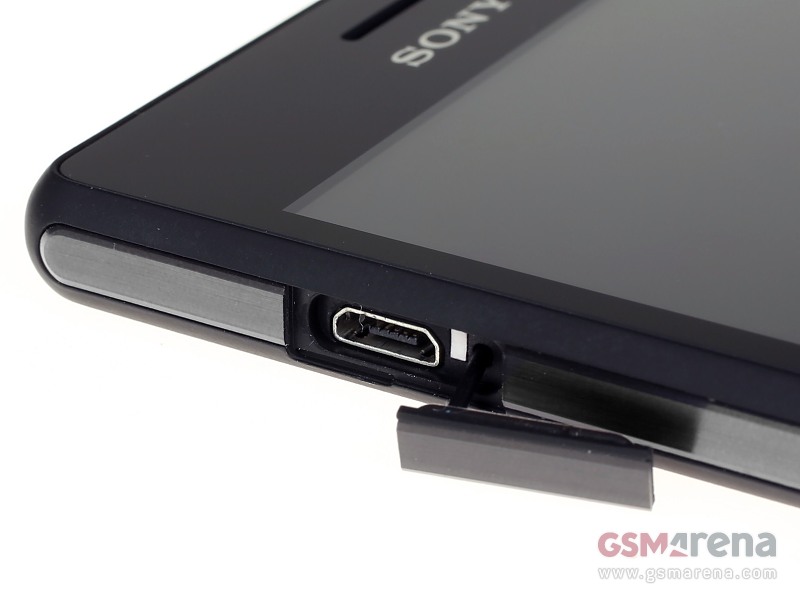
The bottom of the Xperia M2 Aqua seems empty, but in fact the primary microphone and the loudspeaker are hiding behind a fine grille. The lanyard eyelet is also around.
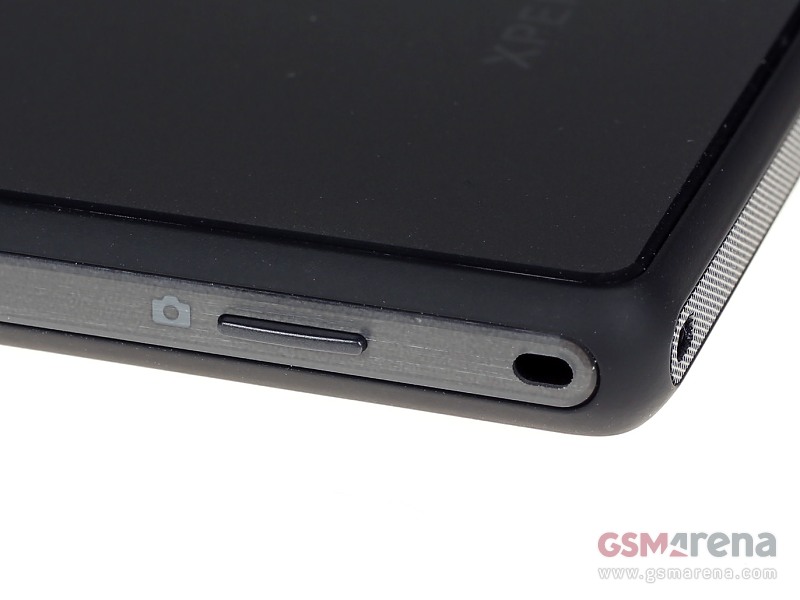
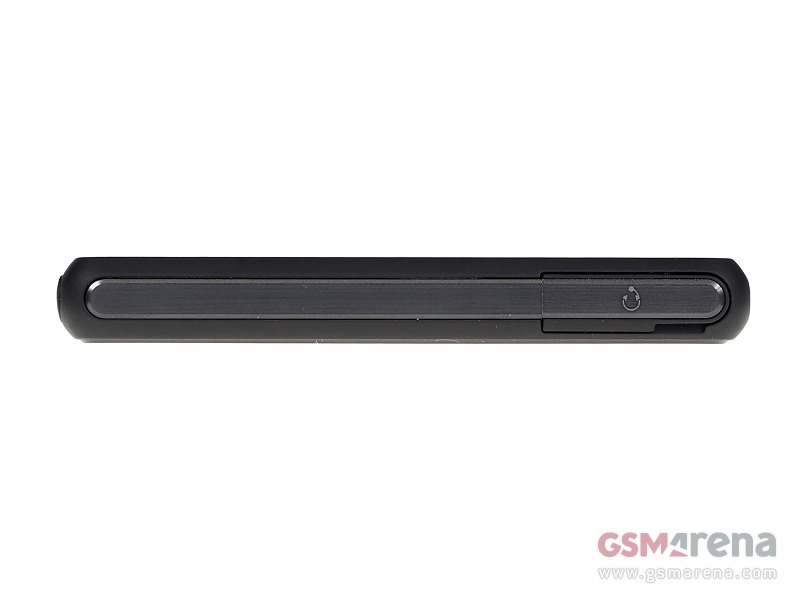

Top and bottom
The matte rear features the 8MP camera lens with a single LED flash, the NFC connection point and the secondary noise-reducing microphone.

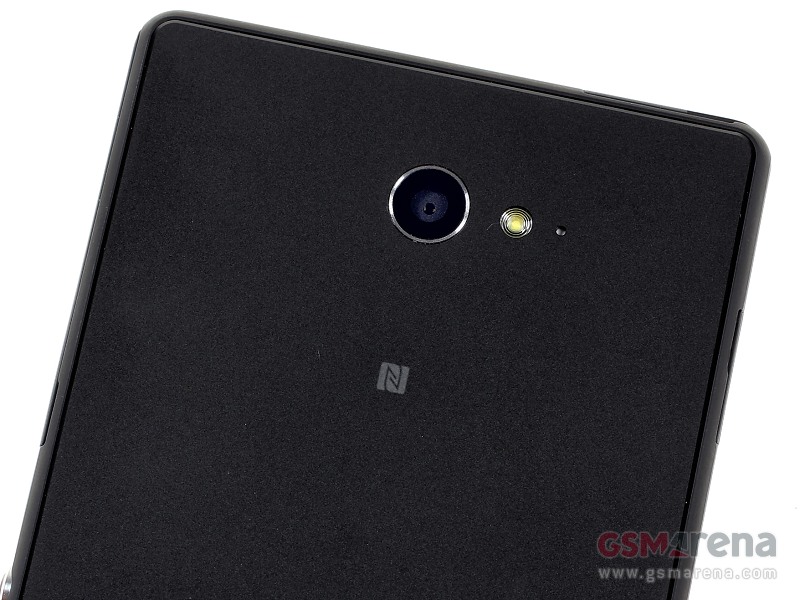
4.8" non-Retina display
he Sony Xperia M2 Aqua has a 4.8" LCD display like its predecessor, only this time an IPS unit. The panel has qHD resolution (540 x 960px) for a decent, even if hardly spectacular, 229ppi sharpness. It is protected by a layer of Gorilla Glass 3, though the absence of oleophobic coating makes fingerprints a problem. The surface is hard to clean.



Sony Xperia M2 Aqua screen
As on the original Xperia M2, the color rendering looks okay but a colder white balance results in a bluish tint. The viewing angles are better than on the original as the Aqua features an IPS matrix which should reduce contrast loss considerably.

Battery life
The Sony Xperia M2 Aqua has the same battery capacity of 2,300mAh but comes with a better-optimized Android 4.4.2 KitKat compared to the 4.3 Jelly Bean with which we tested the Sony Xperia M2. It turns out, there's enough of a difference made. The Aqua got 9 hours more for a total of 76 hours.
The web browsing and video playback tests got about an hour less each compared to the Xperia M2 but with a stellar 350 hour stand by the Xperia M2 Aqua managed to get 4 hours more than its predecessor.

Connectivity
The Sony Xperia M2 Aqua comes in a single SIM version only. Perhaps Sony will add a dual-SIM version - if they get around another slot to water proof. The Xperia M2 Aqua has quad-band GSM 850 / 900 / 1800 / 1900, tri-band 850 / 900 / 2100 or quad-band 850 / 1700 / 1900 / 2100 HSDPA (depending on the market), and either penta 700 / 1700 / 1900 / 2100 / 2600 or hexa-band 800 / 850 / 900 / 1800 / 2100 / 2600 LTE.
The rest of the connectivity features include dual-band Wi-Fi a/b/g/n and Wi-Fi Direct. There is also support for Bluetooth 4.0, GPS and GLONASS, plus an FM radio with RDS. There is also NFC connectivity with support for Android Beam for sending files to other Android devices.
The ultra-low power ANT+ connectivity protocol handles connections to various sports accessories such as heart rate monitors or bicycle speed & cadence meters.
There is a microUSB 2.0 port for charging and data connections. Media transfer mode is supported for accessing the phone's built-in memory and microSD card over the USB cable.
The microUSB 2.0 port can also be used in On-the-go mode for connecting USB peripherals such as pen drives, keyboards or real USB hard drives.
The microUSB port doesn't have any wired TV-out functionality, but if you own a compatible HDTV, you can output your phone's screen wirelessly via the Miracast protocol.
KitKat, finally
The Sony Xperia M2 Aqua comes with Android 4.4.2 KitKat out of the box and is an improvement over the 4.3 Jelly Bean that came preloaded on the Xperia M2 when it first launched. The launcher of the Xperia M2 Aqua looks identical to what you would see on any other KitKat Xperia smartphone, like the Xperia Z2.
The lockscreen is the usual affair - it supports widgets (one per pane), while the rightmost pane will fire up the camera. There are a few available default widgets, but you can always get more from the Play Store. Also third party apps oftentimes come with their own set of extra widgets.
Naturally, you can protect your lockscreen by Face, Pattern, PIN or Password unlock, in ascending order of security.



The lockscreen
The Xperia M2 Aqua lets you add or remove homescreen panes (you start with five) and set any of them as default. You can't have more than seven panes at any given time though, nor can you change the order they're in.


Xperia homescreen
Adding stuff on the homescreen is easy, as it is the customization. You can set various live and static wallpapers, add widgets and shortcut, or change the UI theme.
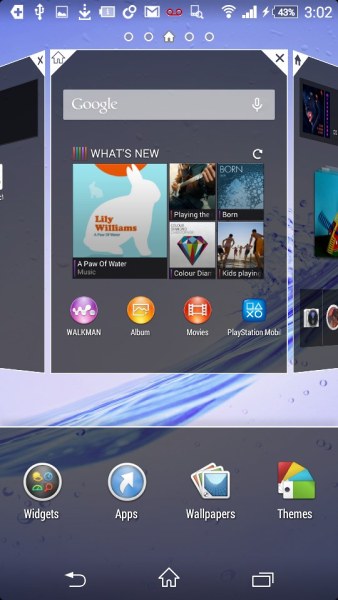



Managing homescreens • Themes



The app drawer is laid out across multiple pages and you can sort the apps manually, alphabetically, by the most used or most recently installed. The menu with those settings is accessible via a swipe from the left edge of the screen and you can also search and even uninstall apps from there.
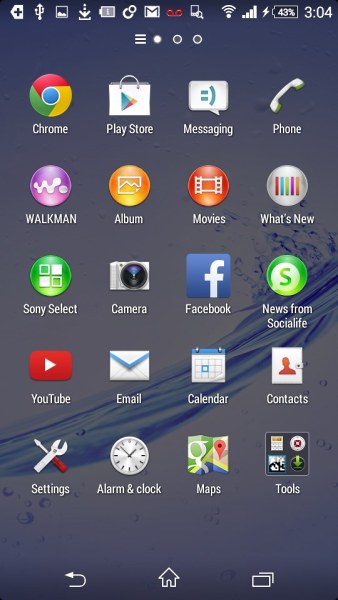
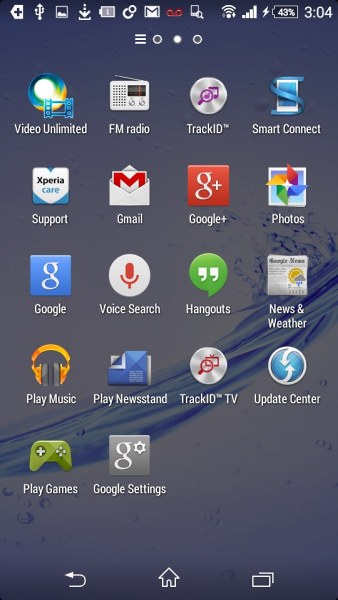
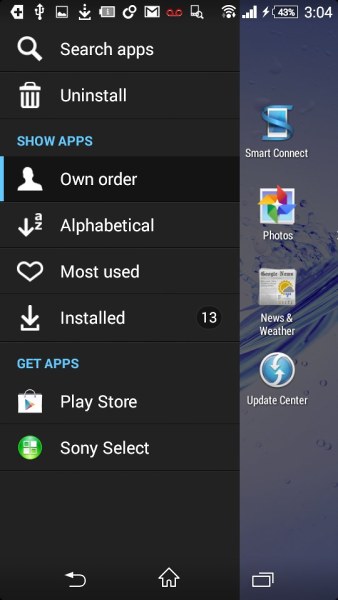
App drawer
The Xperia M2 Aqua uses the stock Android task manager that lets you switch between recently opened apps, as well as terminate them with a side-swipe.
The so-called "small apps" are also available in the Xperia M2 Aqua and are accessible via the task manager. They are similar to Samsung's Mini Apps, and pop up tiny widget-like applications on your homescreen, which you can move around and use without having to open the full-fledged app. So far, there's a default set of nine: Active Clip, Chrome Bookmarks, Browser, Calculator, Calendar, Gmail, Timer, Notes, and Touch Lock. You can launch only one instance of a Small App, but you can open multiple Small Apps simultaneously.
You can download more Small Apps off the Play Store or use the option to turn your favorite widgets into Small Apps. Just hit the Plus key at the top of the list and choose a widget.
The Snapdragon 400 seems to be the maker's favorite chipset when creating midrange devices but is starting to show its age now and we're starting to look forward to better SoCs like the 64-bit Snapdragon 410 to make mass appearance on the midrangers of tomorrow.
The Sony Xperia M2 Aqua didn't rock the leaderboards but it did an okay job nonetheless and we can hardly complain about its real-world performance.
Phonebook
The Sony Xperia M2 Aqua phonebook is integrated with the dialer using a tabbed interface - the Contacts, Phone, Favorites and Groups tabs can be side-swiped. The contact list has a dedicated search filed plus it offers and an alphabetical scroll bar.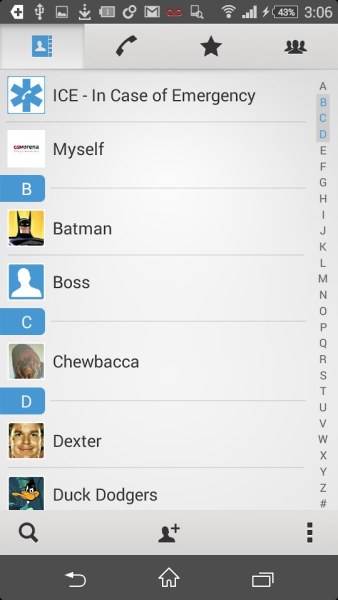
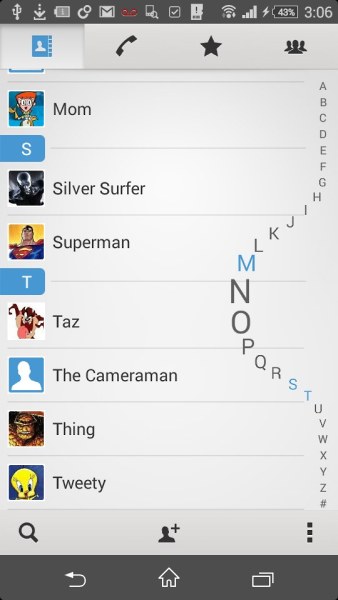
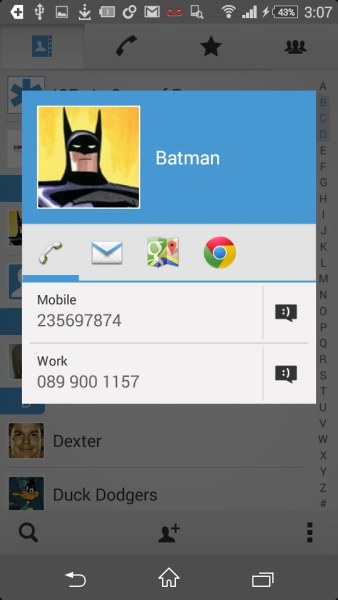
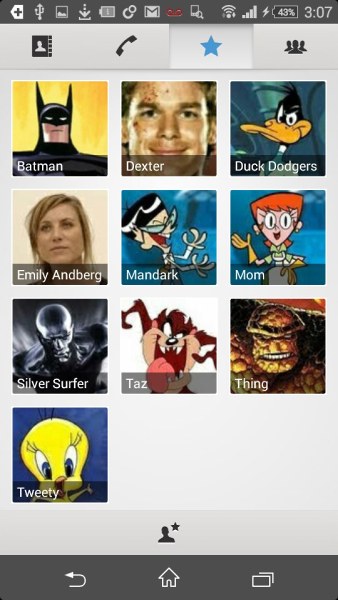
Final words
A waterproofed version of one of their mass-market models is hardly the biggest thing to come out of Sony's labs this season. There's a new super-mini to look forward to and the next flagship generation, plus a couple of wearables just broke cover ahead of the IFA show. Yet, the one thing all these have in common is waterproofing, no less. A fact the Sony Xperia M2 Aqua will be keen to use to its advantageKey test findings:
- Good build, sensible finish but a little too big and heavy perhaps for the screen size;
- Screen is low on pixel density. Good brightness though and excellent contrast. IPS favors viewing angles but the reflective screen struggles outdoors;
- Battery life is good;
- The phone performed without stutters, benchmarks show average performance for the midrange;
- Loudspeaker is only average in loudness;
- Walkman app has loads of sound enhancement options;
- Video player refused to open files with AC3 and AAC audio codecs;
- We like the audio output quality but a little louder wouldn't have hurt;
- Camera samples in Manual mode are much sharper than Superior Auto ones; camera is altogether unimpressive, just like the original M2's;
- Video recording is average with poor sound.
This is all for now...
Thanks,
Comment.Discuss

No comments:
Post a Comment